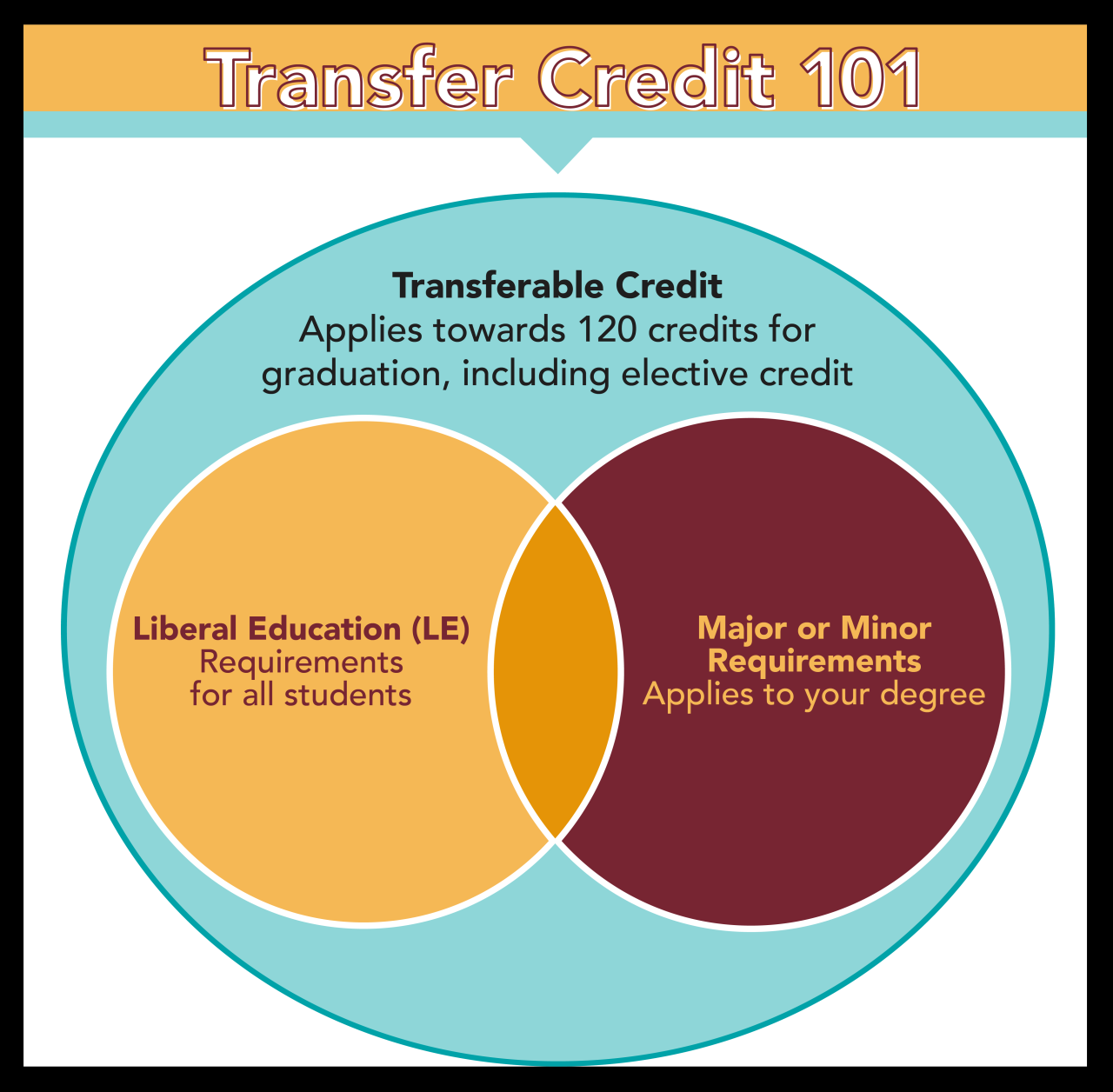
Do graduate credits transfer? It’s a question many aspiring graduate students ask, hoping to leverage previous coursework for a smoother path to their degree. The answer, however, is not always straightforward. Credit transferability hinges on a complex interplay of factors, including the receiving institution’s policies, the nature of the courses, and the alignment of curricula.

This guide delves into the intricacies of graduate credit transfer, exploring the processes, benefits, challenges, and resources available to help you navigate this important aspect of your educational journey. Whether you’re considering a program change or seeking to accelerate your degree completion, understanding the nuances of credit transfer is crucial.
Understanding Credit Transfer

Credit transfer is a crucial aspect of graduate education, allowing students to leverage prior learning experiences and potentially shorten their degree programs. This process involves the recognition and acceptance of credits earned at other institutions towards a graduate degree at a new university.
Types of Transferable Credits
Transferable credits can encompass a wide range of academic experiences. Here are some common examples:
- Course Credits: These are the most common type of transferable credits, representing individual courses completed at another institution. They can include undergraduate courses, graduate courses, or even professional development programs.
- Exam Credits: Some standardized exams, such as the Graduate Record Examinations (GRE) or the GMAT, can be used to earn credit for specific graduate-level courses. These credits are often awarded based on a student’s score on the exam.
- Prior Learning Assessment (PLA): This process involves formally evaluating prior learning experiences, such as work experience, military training, or certifications, for potential credit. This can be a valuable option for students with significant practical experience relevant to their graduate studies.
Reasons for Credit Transfer
Students may seek to transfer credits for a variety of reasons, each aimed at streamlining their graduate education:
- Shortening Degree Programs: By transferring credits, students can potentially reduce the number of courses they need to take at their new institution, thereby shortening their overall degree program.
- Filling in Gaps: Transferring credits can help students fill in gaps in their academic background, especially if they are changing fields or pursuing a graduate degree in a different area than their undergraduate studies.
- Saving Time and Money: Transferring credits can save students time and money by reducing the overall cost of their graduate education. This is particularly relevant for students who may have already taken courses at another institution or who have prior work experience that can be recognized for credit.
Factors Affecting Transferability
Transferring graduate credits can be a complex process, with several factors influencing whether credits will be accepted by a new institution. Understanding these factors is crucial for students seeking to maximize the value of their prior learning and streamline their academic journey.
Receiving Institution’s Policies
The receiving institution’s policies play a pivotal role in determining the transferability of graduate credits. Each institution has its own set of guidelines and criteria for evaluating and accepting transfer credits.
These policies may vary significantly depending on factors such as the institution’s accreditation status, program requirements, and academic philosophy.
- Credit Acceptance Policies: Institutions often specify the types of credits they accept, such as those earned at regionally accredited institutions or through specific course formats (e.g., online, hybrid).
- Course Equivalency: The receiving institution assesses whether the transferred course aligns with its own curriculum and learning outcomes. This involves comparing course descriptions, syllabi, and learning objectives.
- Transfer Credit Limits: Institutions may impose limits on the number of transfer credits they accept, particularly for graduate programs. These limits can vary based on the program’s specific requirements and the institution’s overall transfer credit policies.
Course Content and Curriculum Alignment, Do graduate credits transfer
The content and curriculum of the transferred course must align with the receiving institution’s academic standards and program requirements. This involves examining the course’s learning objectives, syllabus, and teaching methods.
For example, a course in “Advanced Statistics” at one institution might not be considered equivalent to a course with the same name at another institution if the content and learning outcomes differ significantly.
- Course Level: The level of the transferred course must be equivalent to the level required by the receiving institution. For example, a graduate-level course transferred from one institution may not be accepted as a graduate-level course at another if it does not meet the institution’s specific requirements.
- Learning Outcomes: The learning outcomes of the transferred course should align with the learning outcomes of the corresponding course at the receiving institution. This ensures that students have acquired the necessary knowledge and skills for successful progression in the program.
- Teaching Methods: While not always a primary factor, the teaching methods used in the transferred course can be considered, especially if they differ significantly from the receiving institution’s approach. For example, a course taught entirely online might be evaluated differently compared to a course delivered in a traditional classroom setting.
Transferability Across Academic Disciplines
The transferability of graduate credits can vary significantly across different academic disciplines. Some disciplines, such as business or education, tend to have more standardized curricula and learning outcomes, making it easier to transfer credits.
Other disciplines, such as the humanities or social sciences, may have more diverse course offerings and less standardized curricula, potentially making transferability more challenging.
- Specialized Fields: Credits in highly specialized fields may be more difficult to transfer due to the unique nature of the subject matter and the specific knowledge and skills required. For example, a course in “Advanced Semiconductor Physics” might not be easily transferable to a program in “Computer Engineering” due to the differences in the subject matter and the specific skills required.
- Interdisciplinary Programs: Transferring credits from one discipline to another, especially when the disciplines are distinct, can be more challenging. For example, a course in “Art History” might not be readily transferable to a program in “Computer Science” due to the significant differences in the subject matter and the skills required.
- Program Requirements: The specific requirements of the receiving program can also impact the transferability of credits. Programs with more rigid requirements, such as those in professional fields like law or medicine, may be more restrictive in accepting transfer credits.
Transferability Procedures

The process of transferring graduate credits involves a series of steps that ensure the proper evaluation and acceptance of previously earned credits towards a new degree program. This process aims to recognize prior learning and streamline the completion of your graduate studies.
Steps Involved in Credit Transfer
The credit transfer process typically involves the following steps:
- Requesting a Credit Evaluation: The first step is to contact the graduate program you are applying to and request a credit evaluation. This usually involves submitting an official transcript from the institution where you earned the credits you wish to transfer.
- Submitting Official Transcripts: Official transcripts are crucial as they provide a detailed record of your academic history. They must be sent directly from the issuing institution to the graduate program you are applying to. Avoid sending unofficial transcripts, as these may not be accepted.
- Credit Evaluation: The graduate program’s admissions committee will review your transcripts and evaluate the transferability of your credits. This evaluation considers factors such as course content, curriculum alignment, and the level of academic rigor.
- Credit Transfer Decision: Based on the evaluation, the admissions committee will decide which credits will be accepted for transfer. The decision may vary depending on the specific program requirements and the alignment of the transferred courses with the new program’s curriculum.
- Credit Transfer Acceptance: If your credits are accepted, they will be officially transferred to your new graduate program. This may involve adjustments to your course load or program requirements, depending on the number of credits transferred.
Credit Transfer Process Flowchart
The credit transfer process can be visualized as a flowchart, outlining the key steps involved:
- Start: Request credit evaluation from the new graduate program.
- Submit Official Transcripts: Send official transcripts from the previous institution.
- Credit Evaluation: The new graduate program’s admissions committee reviews the transcripts.
- Decision: The committee decides which credits are transferable.
- Acceptance: Transferred credits are accepted and reflected in your new program.
- End: The credit transfer process is complete.
Importance of Official Transcripts
Official transcripts are the cornerstone of the credit transfer process. They provide a comprehensive record of your academic history, including the courses you have taken, the grades you have earned, and the dates of attendance. Official transcripts must be sent directly from the issuing institution to the graduate program you are applying to. Avoid sending unofficial transcripts, as they may not be accepted for evaluation.
Checklist of Required Documents
To ensure a smooth credit transfer process, it is essential to gather all the necessary documents. Here is a checklist of documents typically required for credit evaluation:
- Official Transcripts: Obtain official transcripts from all institutions where you have earned credits. These should be sent directly from the issuing institutions to the graduate program you are applying to.
- Course Descriptions: Provide detailed course descriptions for the courses you wish to transfer. This will help the admissions committee assess the content and level of academic rigor.
- Program Curriculum: Submit a copy of the curriculum from the program where you earned the credits you wish to transfer. This provides context for the courses you took and their relevance to the new program.
- Transfer Credit Request Form: Many graduate programs have a specific form that you must complete to request credit transfer. This form typically requires you to list the courses you wish to transfer and provide supporting documentation.
- Other Relevant Documents: Depending on the specific program and institution, additional documents may be required. This could include a letter of explanation, a portfolio of work, or a standardized test score report.
Final Review: Do Graduate Credits Transfer

Navigating the world of graduate credit transfer requires careful planning and proactive engagement. By understanding the key factors, procedures, and potential outcomes, you can maximize your chances of successfully transferring credits and making the most of your academic investments. Remember to reach out to both your current and potential institutions for guidance and clarification, ensuring a seamless transition towards your educational goals.
FAQ Insights
Can I transfer credits from a different degree program?
Yes, you may be able to transfer credits from a different degree program, but the transferability depends on the specific courses and the receiving institution’s policies.
How long are graduate credits typically valid for transfer?
The validity period for graduate credits varies by institution. It’s essential to check the specific policies of the receiving institution.
What happens if my transferred credits don’t count towards my new degree?
If transferred credits are not accepted, they might be considered elective credits or potentially used to fulfill general education requirements.
Can I transfer credits from an online program?
Yes, online courses can be transferable, but the transferability is subject to the same factors as traditional courses.

